THE UNSETTLING SURVEILLANCE OF ANTI-ASIAN RACISMThe rise of assaults on the elderly, captured on security camera footage, raises questions about policing and what really keeps people safee safe By Jane Hu Mar 31, 2021, 10:00am EDT The video opens on a sunny Oakland street corner, where two men are walking down the sidewalk. The way they move, the composition of their bodies, suggests they don’t know each other. Their stances will feel familiar to anyone used to sharing city streets with strangers. The man in front appears older, walking with deliberate caution, when the other approaches quickly from behind and gives him one vigorous shove. The motion is swift, dispassionate. As the older man falls to the ground, the assailant bounds back with inverse force, releasing his hands above his head in what could be a display of triumph — or merely a reflex — before strolling out of the frame. The clip ends at five seconds, the old man lying still on the concrete. The whole thing is abrupt and sudden. Maybe you’ve seen it, autoplayed on loop, almost like a GIF, as it moves through your timelines. It was first shared by ABC7 San Francisco reporter Dion Lim on February 4th on Instagram, Twitter, and an article titled “Shocking video shows 91-year-old man senselessly pushed to ground in Oakland’s Chinatown.”  In under 24 hours, Lim’s video was retweeted by actor Daniel Dae Kim, who condemned the “skyrocketing number of hate crimes against Asian Americans” and offered a $25,000 reward “for information leading to the arrest and conviction of this man and his accomplices.” The next day, at a press conference held by the Oakland Chinatown Chamber of Commerce, Mayor Libby Schaaf used the recent attacks on Asian Americans as a political gambit, criticizing efforts to reduce the police budget. “I have not forgotten that this last summer,” she said, when local officials “brought a proposal to cut $25 million from the Oakland police department as a political statement, not because of operational or financial need.” The video came at a timely moment: for over a year, “China virus” rhetoric had fueled anti-Asian street harassment and violent attacks that went largely ignored by mass media and the general public. Finally, Asian American activists, community leaders, and journalists were getting national attention on the issue. Four days later, the assailant was apprehended by the police. Because of his court records and history with “significant mental health issues,” he was not charged with a hate crime. The victim, it later turned out, wasn’t Asian, but a Latino man named Gilbert Diaz. The man who sent the footage of the attack to Lim was Carl Chan, who represents the Oakland Chinatown Chamber of Commerce. Chan, who has spent the past 30 years trying to give a voice to his community, is currently working on installing even more surveillance cameras to deter further assaults. “We’re under attack and this is reality,” he tells The Verge. “It didn’t happen yesterday. It’s been happening for so many years, but we just caught the national attention [now].” That attention from the videos, Chan hopes, will justify demands for more policing to combat anti-Asian violence — a sentiment shared by many Oakland Chinatown residents and which, as Kim’s $25,000 bounty suggests, is not isolated to the Bay Area. But calls for increased police presence are in direct opposition to last summer’s Black Lives Matter protests that sought to raise awareness of the over-policing of Black people. The conflict is troubling: increased surveillance and policing may appear to keep one community safer, while putting others in greater peril. 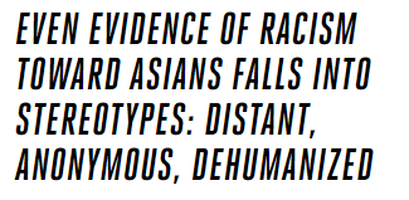 Violent footage from surveillance cameras has been effective in attracting national coverage of the rise of anti-Asian racism. And the viral reception of the videos has also flattened the conversation from one about decades of ongoing racial suffering to one centered on increasing policing, instead of how to effectively protect communities. And it appears the police know it. Recordings of robberies and attacks are sent to the Oakland Chinatown Chamber of Commerce on a daily basis, Chan says. But when asked who sent him the video of Diaz’s attack, Chan demurred, growing defensive that I might not be here to report on the “real issues” but rather to make it an “anti-police story.” He would not confirm where the video came from. Just days before the video of Gilbert Diaz’s attack went viral on Twitter, a similar one capturing the killing of an 84-year-old Thai man named Vicha Ratanapakdee outside his San Francisco apartment made national headlines. Both were caught on surveillance cameras, and both show what appears to be one man coming up behind another and shoving them before rushing away. Never mind the fact of Diaz’s race. These two videos continue to be widely circulated as proof of the rise of anti-Asian hate crimes, even though neither of them led to hate crime charges. “They were saying that ‘we don’t see it.’ So with these videos, people are finally seeing that it’s actually happening,” Chan said to CBSN Bay Area. “The videos are doing justice.” These videos have come to exemplify what we might call a new genre of the anti-Asian hate crime media. They’re often sudden and impersonal — frequently taken from surveillance footage that often shows no other bodies around besides the assailant and the victim. These images stand in contrast to the many videos of police brutality against Black bodies, almost always filmed on phone cameras. The footage that captured the killings of Eric Garner and George Floyd follow an arc that’s familiar partly because we’ve seen it too many times — recordings that unfold with slow dread as we watch a Black man victimized by a racist police officer.  The videos of assaults on Asian Americans present a different horror: you’re witness to a scene of brutal violence that is so swift as to appear almost random, meaningless. Watching these attacks, it’s often impossible to tell the race of any of the bodies involved. The sound is often garbled, if there is any sound to be heard at all. Even evidence of racism toward Asians falls into stereotypes: distant, anonymous, dehumanized. The most recent viral video capturing the attack of a 65-year-old Asian woman represents an escalation of this genre. The violence is even more brutal, but just as harrowing is the reluctance of building staff to intervene. One finally responds by shutting the door on the woman. (The building managers quickly responded in a public statement by condemning and firing these workers.) The NYPD is investigating whether the assault was a targeted hate crime. 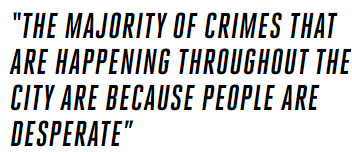 Every hate crime story is a policing story. After all, “hate crime” (sometimes known as “bias crime”) emerged as a new legal category in the 1980s to charge felons motivated by prejudice. Yet the term reflects an oversimplification of the phenomenon it seeks to describe, given that law enforcement hinges on whether they can “prove” the perpetrator’s “hate” toward a target group. This was recently made explicit when a gunman attacked three Asian spas in the Atlanta, Georgia, area, killing six Asian women in addition to two other victims, and it spurred international debates over whether the act was a hate crime. Captain Jay Baker, speaking on behalf of the Cherokee County Sheriff’s office, explained that the shooter was “not racially motivated” but by “a temptation… he wanted to eliminate.” Baker’s implication that a crime, particularly one targeting three different Asian massage spas, could not entail both racial and gendered bias prompted immediate backlash. “In Atlanta, you have the police,” University of Texas Austin history professor Eric Tang tells me, “these investigators who have known nothing about racism, known nothing about misogyny, known nothing about Asian Americans, getting to determine and interpret what happened.” Which is all to say, as Tang puts it somberly, “that we’re not in a very good position, three decades down the line.” To that point, Baker was soon revealed to have posted images of T-shirts that read “Covid 19: imported virus from Chy-na” on social media and has since been removed from the case. Hate crimes present problems of legibility. Notoriously difficult to convict, hate crime cases often backfire — causing further harm in their disavowal of prejudice. Failures in hate crime convictions can “really just reinforce that designation,” explains Lu-in Wang, a law professor at the University of Pittsburgh, “that there are certain groups that are acceptable targets for violence… because people don’t care as much about them,” which only further licenses the hate crime. Even while the Cherokee County Sheriff’s office dismissed racial bias in the Atlanta shooting, local authorities did not hesitate in the immediate aftermath to send emergency patrols specifically to Asian neighborhoods, while police departments as far as Chicago and New York City also stepped up patrolling. Just as opportunistic was Oakland Mayor Libby Schaaf, who used the pretext of rising Chinatown attacks to take a swing at her political opponents and perhaps shift the reputational burden of policy. (Critics have repeatedly pointed out that the cuts to the police department decried by Schaaf came from her own administration.) Law enforcement and politicians alike are now banding together to weaponize attacks on Asian Americans Pacific Islanders (AAPI) to their own ends, often through highly spectacularized media events. Chaney Turner, a Black organizer who has lived in Oakland her entire life, sees the root cause of what is happening in her hometown as an issue of poverty. “Yes, there are some targeted crimes of people because of their race,” Turner explains, “but the majority of crimes that are happening throughout the city are because people are desperate. People are dealing with economic and mental health issues, and these are issues that we were experiencing before Covid.” Despite rising crime throughout Oakland during the COVID-19 pandemic, including Turner’s neighborhood in East Oakland, the mayor has focused on select communities like Oakland Chinatown. Some organizers like Chan are grateful for the attention: the policing of hate crimes offers the possibility of legitimizing the ongoing suffering and fear faced by many Asian Americans. Yet the punitive demands after anti-Asian attacks also go directly against the work of so many grassroots decriminalization efforts, some of which are AAPI-based like APEN and Asians 4 Abolition, among many others. 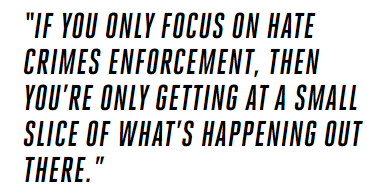 As history and research have exhaustively shown, more policing will inevitably result in greater harm to Black and Latinx communities. Take, for example, New York City’s quota-driven stop-and-frisk program, which resulted in increasing risks to vulnerable populations of anxiety, depression, struggles in school, and community engagement in civic life, without being particularly helpful in fighting crime. Faced with growing terror and limited options, however, some Asian communities now feel that they must choose to protect their own by turning to the police. Yet this false binary — between choosing or not choosing the police — is not a failure of the Asian community’s desire for safety, but a failure of policing. James Burch, policy director of the Anti Police-Terror Project, tells me about alternate models, unexplored by Schaaf, such as an ambassadorship program that provides “presence of safety” to communities. The choice, to him, doesn’t have to be how few or many police officers are deployed. As with other Oakland organizers like Turner, Burch is also frustrated with how Schaaf has used the violence against Asians as a photo op. “What I can’t allow is our current mayor weaponizing the situation to divide Black and Asian communities at a time when we are and have been working so hard to unite them,” he says. If proving anti-Asian racism has hinged on the hate crime, maybe the answer is to simply move away from the term and make a new one. Founded in 1991, Asian Americans Advancing Justice launched the #StandAgainstHate platform in early 2017 in an effort to track “hate incidents,” as they’re called, against AAPI and Muslim communities that surged in the wake of Donald Trump’s election. Though it’s been the newer Stop AAPI Hate, formed last March, that has garnered more recent media attention, with its rising record of hate incidents (the latest report counted 3,795) frequently cited across articles. Instead of hate crimes, Stop AAPI Hate co-founder Russell Jeung tells me, the broader category of hate incidents captures a range of events from online bullying to physical attacks that may not be criminally prosecutable but can still be traumatizing. Almost 90 percent of the reports Stop AAPI Hate receives are incidents rather than crimes — in other words, forms of verbal harassment or shunning that are often overlooked when it comes to accounting for anti-Asian racism. “Unless you understand the comprehensive nature of racism in all its forms,” Jeung says, “you can’t really address it well. If you only focus on hate crimes enforcement, then you’re only getting at a small slice of what’s happening out there.” One of the questions Jeung wants to ask, however, is whether simply reporting the hate incident — calling it what it is — might help reduce harm, even minimally. In contrast to hate crime data, Jeung hopes to develop “a collective voice” that expresses a different type of racial trauma — one Stop AAPI Hate plans to study by working with the Asian American Psychological Association in the future.  Yet because the accounting of this data remains unofficial and broadly defined, there is also always the problem, as sociologist Tamara K. Nopper recently pointed out in a talk, of media literacy. Looking at Stop AAPI Hate’s data, which ranges from physical violence to shunning, Nopper asks, “What does it mean that the term hate encompasses all of these activities? And that hate is often being used interchangeably with violence?” As Stop AAPI Hate’s data keeps getting cited in news reports, Nopper warns, “this data source, as well as the hashtag, are part of what is kind of mobilizing this hate crime statistic collection; but also the passage for tougher legislation.” While the vast majority of anti-Asian hate incidents have been documented in writing, it has been videos of explicit physical violence that have come to dominate and drive awareness of the phenomenon. In a culture where anti-Asian racism remains difficult to represent, footage promises something like incontrovertible evidence. Though, as the video of Diaz’s attack suggests, even surveillance footage can ultimately obscure more than elucidate. A month after the video of Diaz’s attack was released, I went down to Oakland Chinatown to try to see if I could find the specific surveillance camera on which it was captured. I did. It wasn’t hard. The camera was hidden in plain sight outside an unassuming Chinese tailor shop. Though when I went inside to ask whether they owned the camera, I was redirected to the Asian Resource Center next door, where a security guard told me that all of the cameras around the building belonged to the Oakland police. The Oakland Police Department denied a records request for the video. After several emails with the department’s media office, a spokesperson responded but was unable to provide details of where the exact footage of Diaz’s attack came from. Instead, they informed me that the department does not technically own any cameras in Chinatown and that they were typically maintained by commercial or residential property owners. With this new information, I returned to Chinatown in hopes of clarifying who exactly did own the surveillance camera. Back at the Asian Resource Center, a different security guard told me that, while he had no idea who managed the security system around the building, he was pretty sure the police had access. As to who owned the surveillance cameras? This security guard wasn’t sure about that either, but he suggested I try property management. I’d put in a call to building management a month ago, and they also would not confirm if the footage had been given to anyone. No one would claim responsibility for the footage, and yet, just last week, it played during a Fox News interview with Schaaf, cited alongside Ratanapakdee’s attack as examples of why Oakland needs to restore “desperately needed police services.” 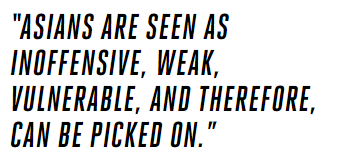 Toward the end of The Verge’s interview with Chan, he apologized for his earlier defensiveness around questions about the provenance of the footage. Moving away from the individual video of Diaz, Chan started talking about all of the other videos he’d received that he was unable to forward to the media. Oftentimes, it’s because the subjects involved want to protect their privacy. “I guess that’s why I’m actually sensitive about videos,” Chan admits. “I’m having trouble trying not to remember all these images… before I go to sleep, I try not to remember what I saw because I really couldn’t go to sleep every time I imagine, I’m thinking, My God, how could our seniors be attacked?” For Chan, the desire for more patrols and cameras in Oakland Chinatown stems from a sense of desperate urgency — a desire to keep his community safe from what feels like endless injury with little relief in sight. Even those who disagree with Chan carry with them the history of unacknowledged pain. Earlier that day, I’d spoken with Gordon Chang, a professor of Asian American history at Stanford. We’d spoken about the violence, and though he disagreed with increased policing, he was sympathetic to Chan’s despair. “Asians are seen as inoffensive, weak, vulnerable, and therefore, can be picked on. We all know that the Asians get picked on,” he’d put it bluntly. “This is our lot in life.” I’ll admit, something rings true about this sentiment — many anti-Asian hate crimes are also crimes of opportunism, targeting those who are socially viewed as unlikely to fight back or speak up. But it was a sunny day when I went in search of the surveillance camera that had caught Diaz’s attack. A year of the pandemic had heightened not just racial but also economic suffering. Walking around Chinatown, I observed restaurants and shops opening — some, but not all — as people shuffled on with their day, just outside the frame of that original video. https://www.theverge.com/22359080/anti-asian-racism-attacks-surveillance-policing
0 Comments
|
Gene HazzardDon't Be Envious of Evil Men Archives
June 2024
Categories
All
|
- Home
- Sanjiv Handa
- Gene's Blog
- Rotunda RFP
- Gene Hazzard -Keeping eyes open
- Chronology of Tagami's scheme of Private-Public Partnership with City Projects
- Another Tagami scheme - Rotunda Building deal
- Oakland Army Base
- Billboards in Oakland
- Port of Oakland
- Oakland Raiders?
-
Who is running Oakland?
- Jerry Brown
- Don Perata
- Judge Robert B. Freedman
- Jacques Barzaghi
- Gawfco Enterprises
- Deception
- Doug Bloch
-
Phil Tagami
>
- SF Business Times November 20, 2005
- Rotunda wrestling
- A conversation with Oakland developer Phil Tagami
- Audit of $91 million Fox Theater project
- Tagami Conflict
- CCIG Response to Oakland Works
- Oakland developer Phil Tagami named to state medical board
- ‘Shotgun Phil’ hits another bullseye — with governor’s help
- CleanOakland Store
- CenterPoint Properties

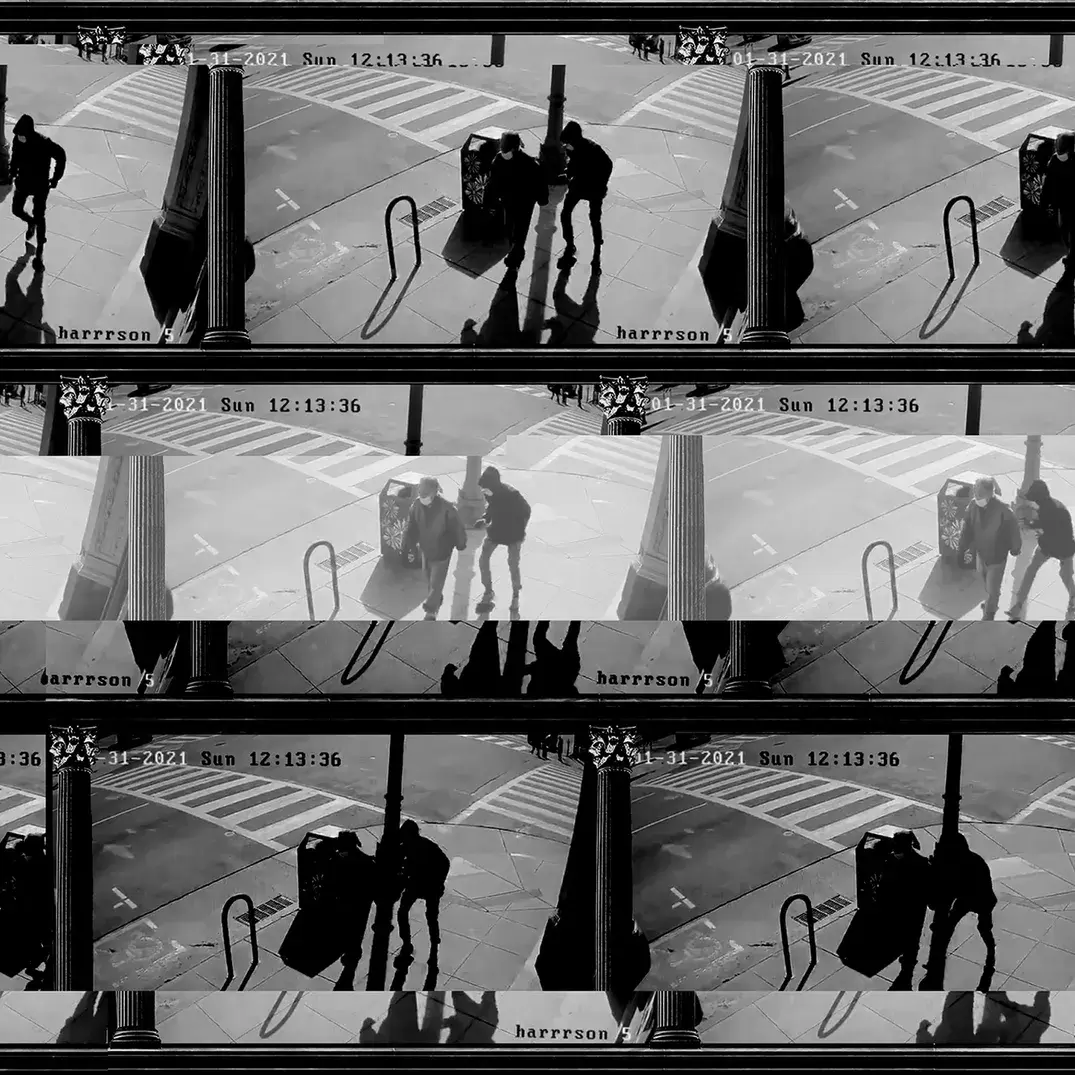

 RSS Feed
RSS Feed
